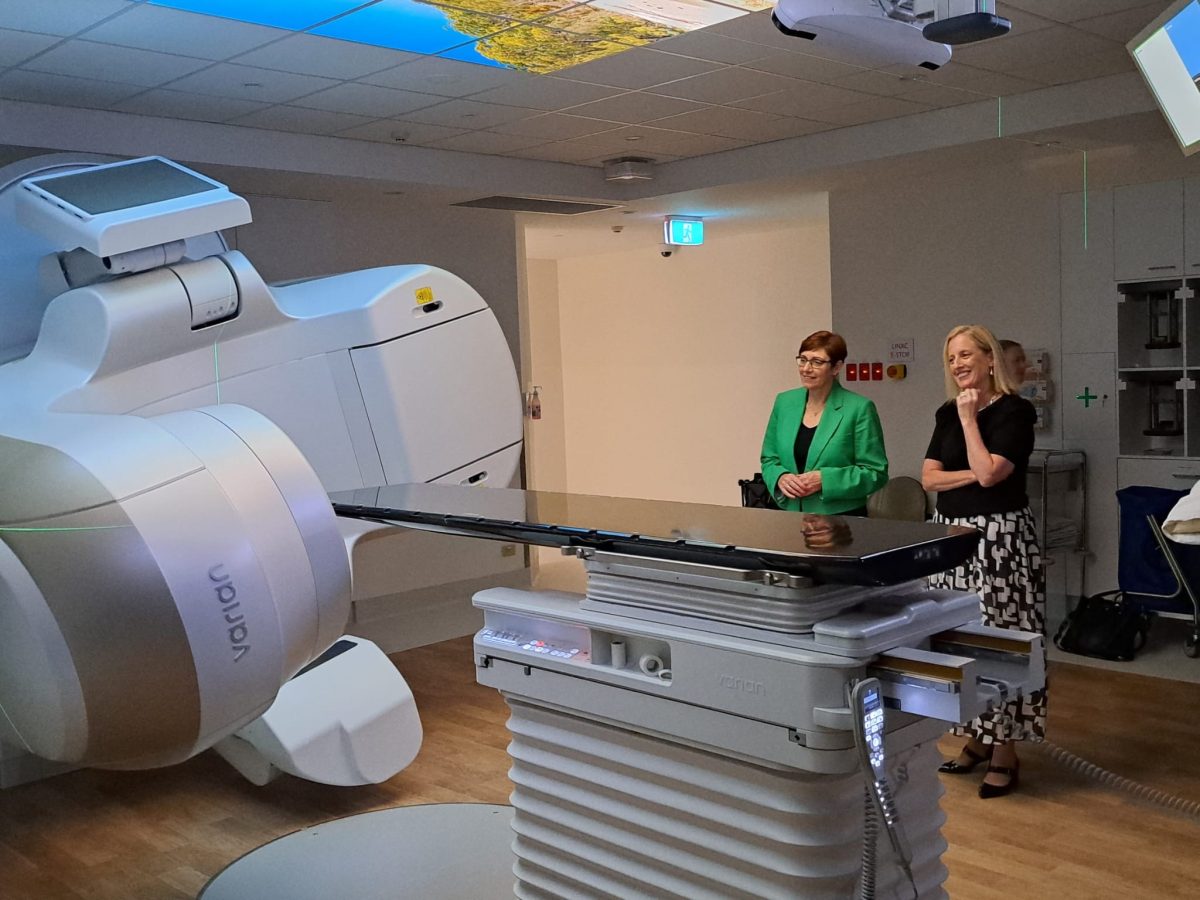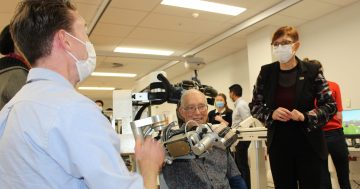
Health Minister Rachel Stephen-Smith and ACT Senator Katy Gallagher unveiled the new LINAC machine at the Canberra Region Cancer Centre. Photo: Supplied.
The ACT is operating with four specialist radiation machines for the first time since 2018.
The new linear accelerator (LINAC) will deliver therapy for patients at the Canberra Region Cancer Centre in the Canberra Hospital.
It’s the fourth and final machine of its type to be installed as part of a replacement program funded by both the ACT and Federal Governments.
Radiation Therapy director Martin Seng explained the team had done a lot of background work on re-thinking and re-designing every aspect of treatment in the radiation and oncology department to ensure having machines offline didn’t impact treatment times.
“What that means is that, during the replacement program, we’ve been able to treat as many patients using only three LINAC accelerators compared to the usual four,” he said.
“Now moving forward, we’re able to increase our capacity even more and treat even more patients.”
The LINACs cost about $4 million each and take six to nine months to install – including removing the old machine, refurbishing the space, installing and then commissioning the latest machine.
Mr Seng said these newest machines were the latest on the market and could treat a tumour down to “sub-millimetre” accuracy.
“That’s important because the more targeted we can be, the less healthy tissue we will treat, and then we can escalate the dose to these patients because we’re treating less healthy tissue,” he explained.
“It [also] means patient’s treatment times can sometimes be brought down from eight weeks down to as short as two or three treatments.”
This enables cancer radiation treatments to be delivered in larger doses in a safer, more precise way.
ACT Health Minister Rachel Stephen-Smith said the completion of the program marked the end of an “incredibly complex and delicate process”.
“These are multi-million-dollar machines that provide top-of-the-line radiation therapy to patients,” she said.
“This has the potential to improve wait times, with more patients being treated in a shorter timeframe.”
The LINAC replacement program was funded through the Commonwealth Government’s Radiation Oncology Health Program Grant at a cost of $12 million.
An additional $6.4 million was provided by the ACT Government.
Ms Stephen-Smith said there was more to come in this space.
“The LINAC replacement program is one of the many investments the ACT Government has made to improve cancer facilities and services in the ACT. This includes a new research centre currently under construction in the CRCC with a new research lab and clinical spaces,” she said.
“The research centre will be co-located with a new wellbeing centre to enable the CRCC to deliver treatment, research, therapies and wellbeing support in one place.”
Several of Canberra’s medical machines have been funded to be updated as part of the 2022-23 Budget.
This includes replacing and upgrading a single-photon emission CT (computerised tomography), a nuclear medicine gamma camera and a positron emission tomography.
Work to replace these machines is expected later this year.
The new Critical Services Building will also have four X-ray rooms, three CT scanners, two ultrasound rooms, one ultrasound procedure room and two MRI units, adding to what’s already available at Canberra Hospital.



















